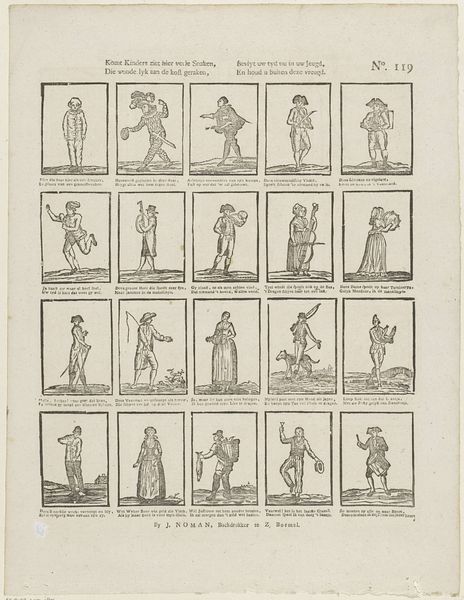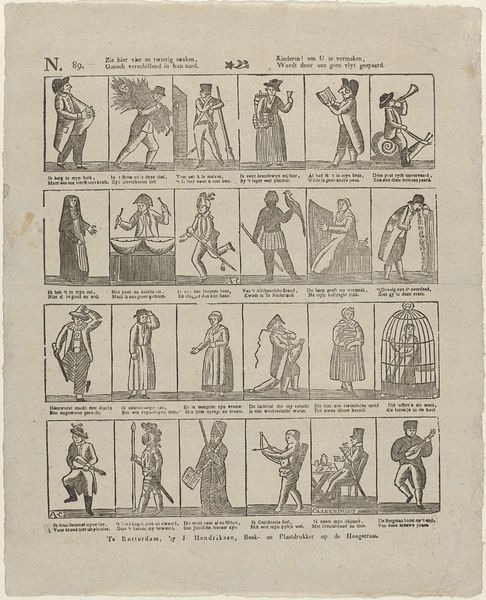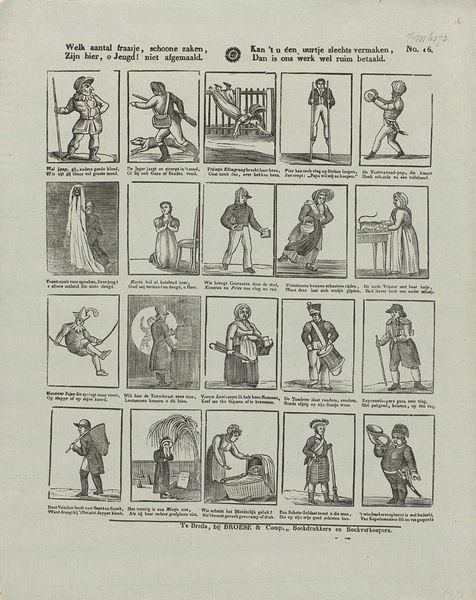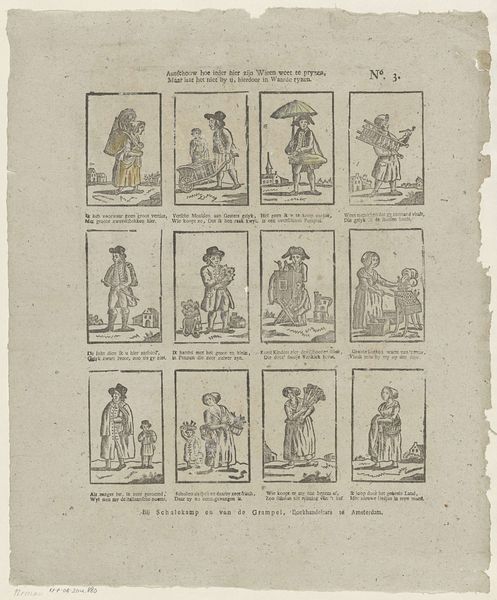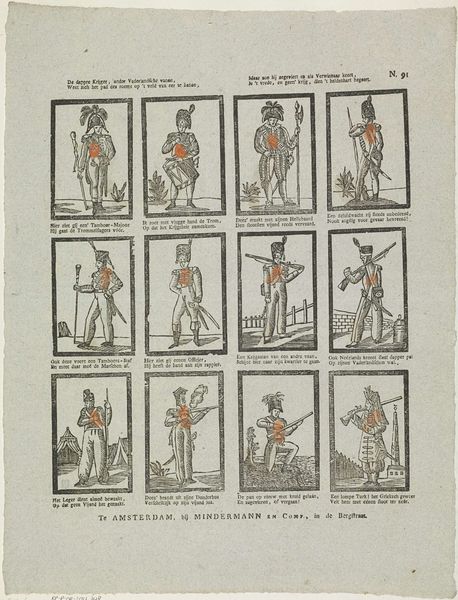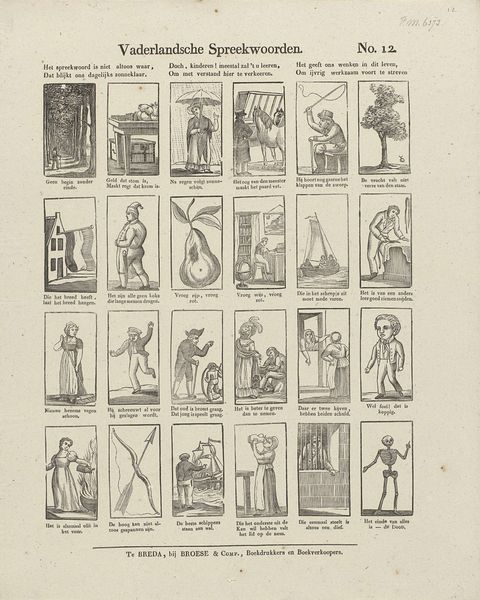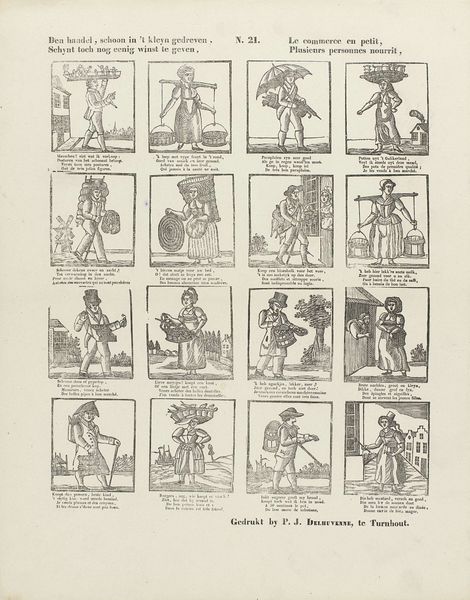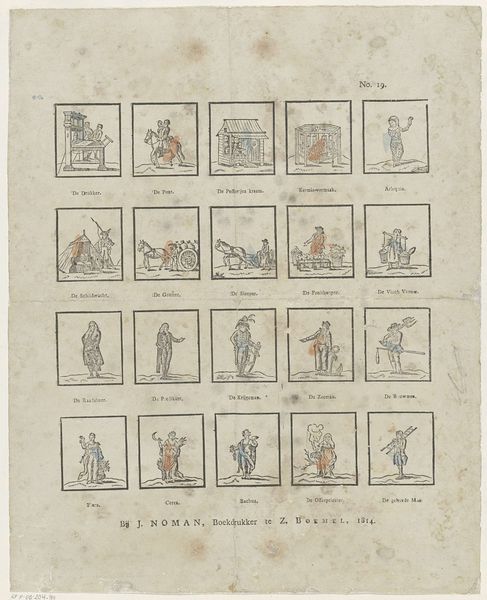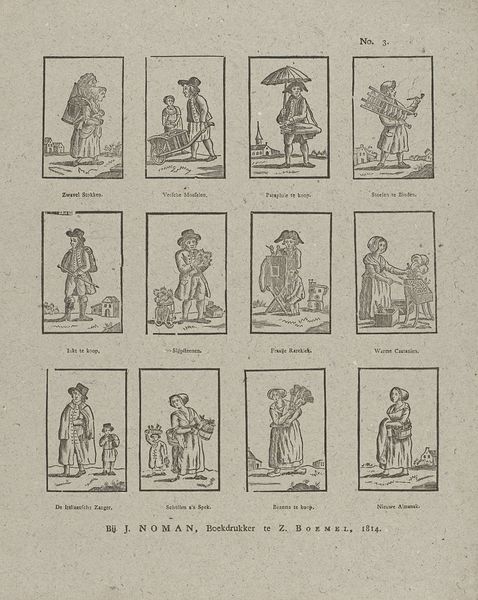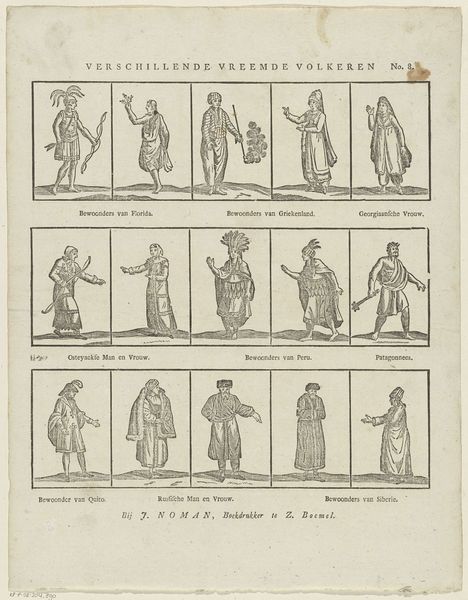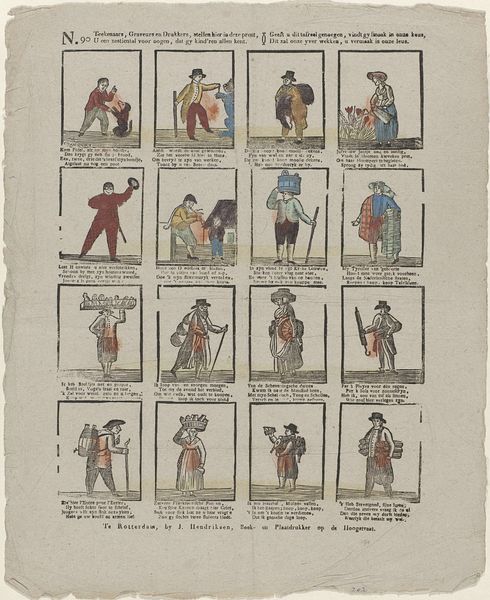
print, engraving
# print
#
genre-painting
#
engraving
#
realism
Dimensions: height 410 mm, width 315 mm
Copyright: Rijks Museum: Open Domain
Hermanus van Lubeek created this print, Verschillende Neeringen, using etching. As a process, etching involves using acid to cut into a metal plate, which is then inked and printed. It’s a method that allows for fine detail but it is also relatively quick, lending itself to the mass production of images. This work shows a range of occupations, all rendered with the same brisk, economical line. The print is not concerned with the individual stories of these people, but rather with the social reality they collectively represent. Look closely, and you see the figures are shown carrying the tools and materials of their trades: a sack, a measuring stick, a basket, a brush. The effect of these emblems is to emphasize the labour they perform. Van Lubeek is showing us a world of work, reminding us that images, like all objects, are made by someone, somewhere, under particular conditions. It is a powerful reminder of the connection between artistic vision and the material world.
Comments
No comments
Be the first to comment and join the conversation on the ultimate creative platform.
